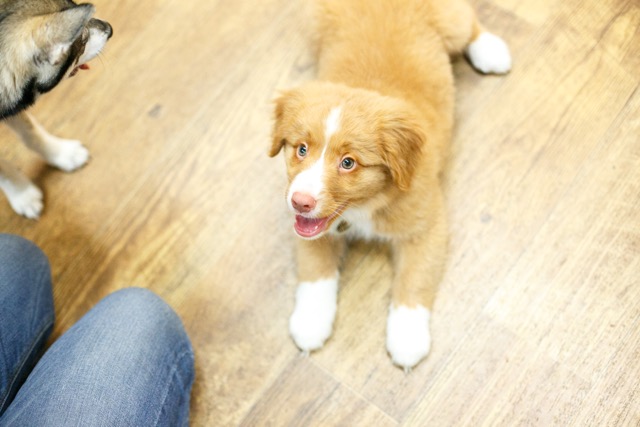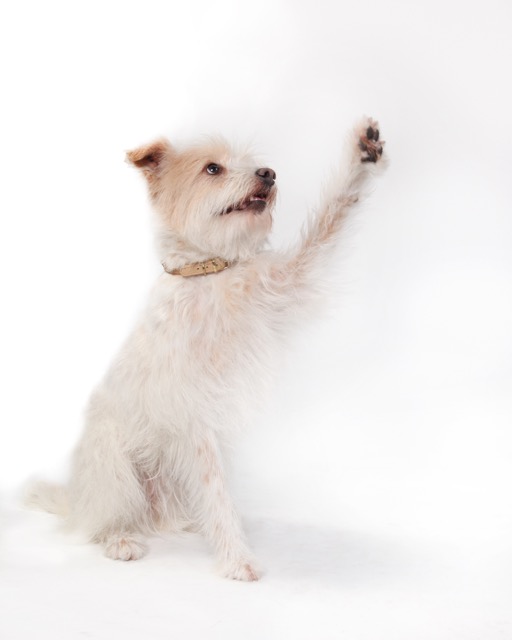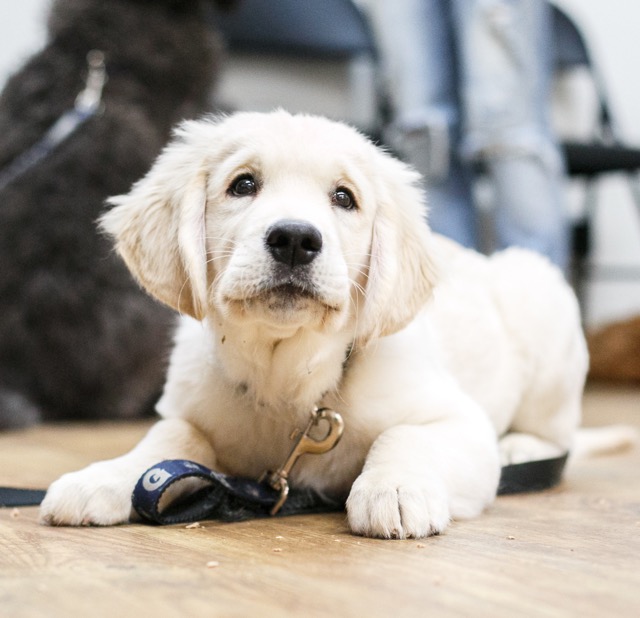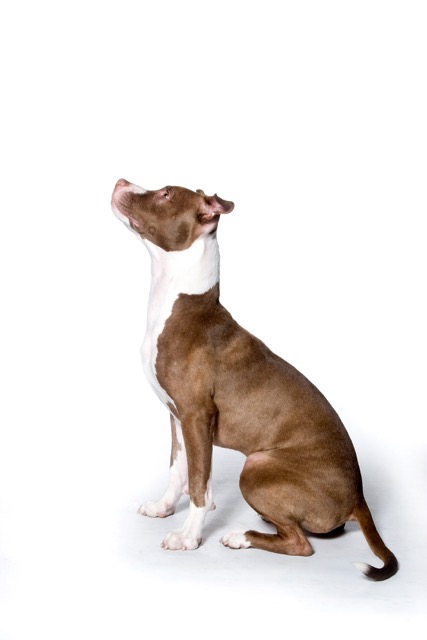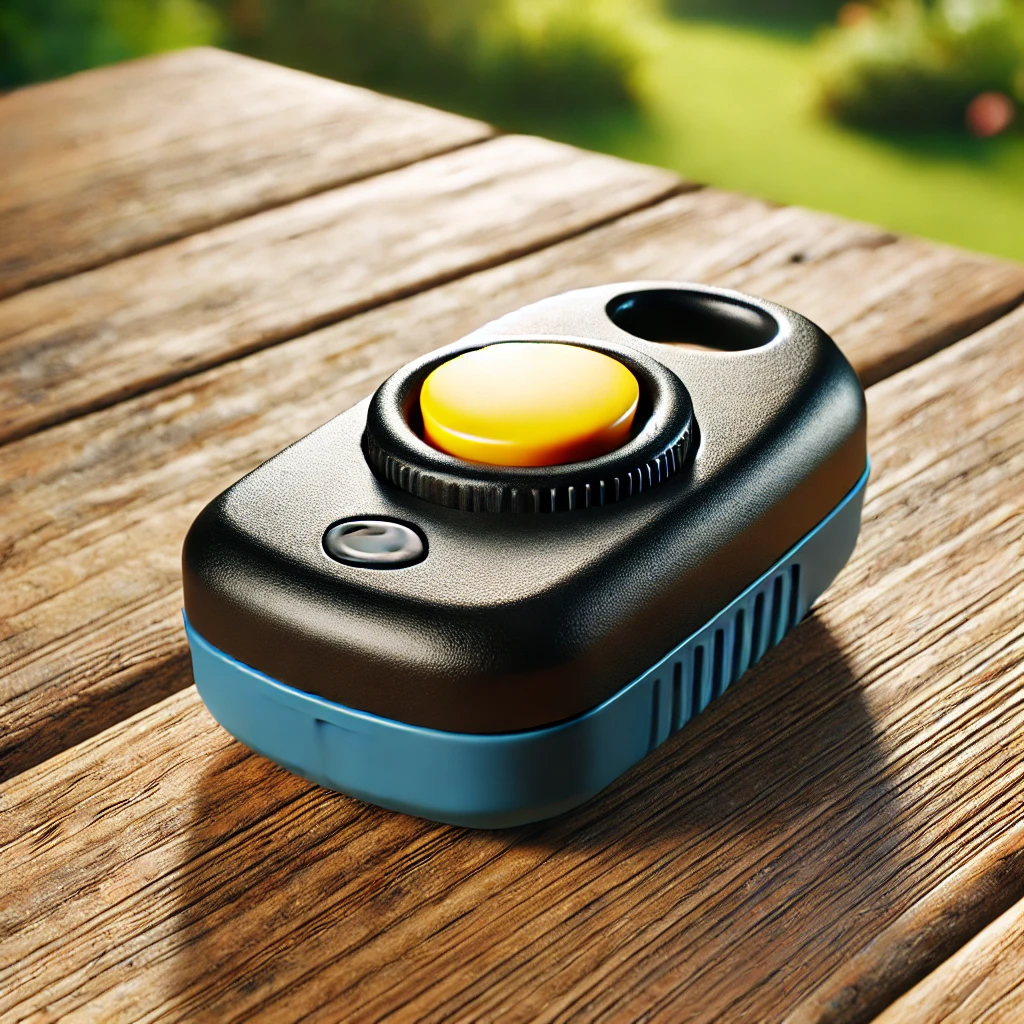
Clicker Training Secrets Every Dog Owner Needs to Know
Clicker training is a technique used in the positive training of many animals including puppies and dogs. It relies on the dog recognizing that the sound of the clicker means what they were doing at the time they heard it will earn them a reward. It can also be referred to as mark and reward training. The clicker becomes a clear way for the human trainer to communicate to the dog what they like, what they are teaching, and why precisely the dog is receiving a reward. Animals do what works for them, so if sitting earns them a reward they will likely sit again. If jumping works for them, they will likely continue jumping. The clicker provides some clarification during the training process, giving the canine students clear guidance about what behavior will be most reinforcing. For our readers clarification, let’s break the specifics down.
What Is A Dog Clicker
A animal training clicker is a small plastic box (that fits easily in the hand), with a flexible piece of metal in it. When the metal is pressed by a finger, it makes a clear quick “click click” sound. There is a second style clicker that is a bit smaller and quieter. It is an oval shaped plastic container with a button that is pressed to make the sound. Both styles serve as sound markers in the animal training process. Other commonly used sound markers are whistles, and single verbal words like “good” or “yes”. Visual and tactile reward markers can also be used it positive training.
What Is A Reward Marker
A reward marker is a conditioned reinforcer. In dog training using a sound marker is typical, but visual and tactile markers can also be useful. This is especially true for dogs with poor hearing or poor vision or both. Dogs with visual and auditory impairments can also learn that specific vibrations produced by their trainer serves as a behavior marker or a cue.
In itself there is nothing inherently reinforcing about a clicker or any other reward marker. The reward marker becomes informative and reinforcing because it is paired with a reward. Take paper money as an example. There is nothing inherently rewarding about a printed piece of paper. Money is rewarding because it can produce things of value. The clicker, or reward marker predicts good things are coming to the dog. The dog hears the clicker when the correct behavior is performed and then receives a reward. The clicker aids in bridging the gap between the behavior and the reinforcement. This is why you may also hear a reward marker referred to as a bridge in exotic animal training circles.
Using a dog clicker for training helps you mark the exact moment your dog performs the right behavior. This dog clicker training guide will walk you through the steps to make your training sessions more effective.
Teaching Your Dog The Significance Of The Clicker
All reward markers need to repeatedly be associated with a treat or some clear form of reward in order for their meaning and their value to become apparent to the animal being trained. Once the association is formed, the marker becomes a conditioned reinforcer. To introduce your dog to the clicker and establish its sound as a reward marker follow these simple steps:
- Cut up some tasty treats in tiny pieces. There are two reasons to make the treats small. 1) you will want to do a lot of repetition, so you will needs a lot of rewards. 2) You will want the treats small so you are not waiting between repetitions for your dog to chew or potentially get distracted
- For this exercise you can put your treats in a cup that you can retrieve a treat out of easily, a hands free treat pouch, or your closed fist as long as you can deliver one treat neatly and quickly at a time
- You will have your clicker in one hand, your treats ready to be given with the other hand, and your dog sitting or standing in front of you. Some people like to put the clicker on a coil wristband or lanyard for easy access
- Pick a quiet non-distracting place in your home to be your classroom, so you and your dog can focus on what is being taught
- In all likelyhood your dog will be sitting in front of you, looking eagerly at you while waiting for a treat. This is not mandatory but it does set a nice stage
- You will click the clicker one time and then give a treat and repeat. Repeat the click followed by a treat over and over again. This is commonly referred to as charging the clicker. With each repetition you are giving your dog the chance to build a positive association between the sound of the clicker and the delivery of the treat
- After about 15 to 20 repetitions, move to a new spot in the room and do the exercise again. Do this numerous times
- End your session for about five minutes but have your tools (clicker and treats close by). You want to give your dog the chance get mildly distracted and move on to doing something else like sitting on their dog bed or looking out the window. When the dog is mildly distracted click the clicker. You will know you have been successfully building meaning if your dog swings their attention over to you with an expectant look. Be sure to follow the click sound with the treat. Note: It is important that the sound of the clicker always be followed by a treat. Otherwise, the power of the clickers meaning and subsequent enthusiasm your dog feels when it is heard with be diluted
- Now that your dog is familiar with, and understands that the clicker sound results in a treat you can begin using it in training sessions
- If your dog already knows some basics manners behaviors like sit and down, use these behaviors to begin practicing marking with the clicker
- Cue your dog to sit and when your dog responds correctly, click, and treat. If you are still luring your dog into a sit you can still lure your dog into the sit position, then click, and deliver the treat
- Do the same with down
- Practicing using your clicker as a reward marker for previously trained behaviors will give you a chance to get comfortable with the tool and hone in on your timing skills
Once you and your pup are a bit practiced, you can begin using your clicker to train all sorts of simple to more complicated behaviors.
Why Is The Clicker Superior To A Voice Marker
When we use a verbal marker like “good” or “yes” it should be said in a crisp distinct way. Even so, verbal marker words will be heard by your dog on a daily bases. As a result, the importance and meaning of the verbal marker can become diluted. The clicker sound on the other hand, is only heard during formal training sessions. Times when you are presumably prepared with a training goal and plan in place. You have your treats, your clicker, and are ready to give your dog 100 percent of your attention. A clicker training session should be a very fun, rewarding experience for you and your dog. An opportunity not only to train, but to build up the reinforcing nature of your relationship. Dogs pick up on the positivity of these sessions quickly and get into learning mode. For these reasons playing the training game using a clicker and all the principles behind the technique make for very effective learning for dogs all ages. The clicker provides clear communication to the dog, and people tend to work more precisely when using a tool. Interestingly, children tend to be particularly good at clicker training. Perhaps because they see the game element in it and are good at the rules of the game.
When Is It Best To Use A clicker
Clicker training is very efficient and effective but it will not, and does not need to be your only method for telling your dog they are behaving well. The best times to employ your clicker are:
- For training new behaviors
- Training behaviors that require precise communication on our part to inform our dog
- When teaching skills that require frequent marking and rewarding, such as early formal walking exercises
- Tricks training
- When the dog is performing a distance away from us, clearly requiring the bridge concept between the behavior and the reward
When Is The Voice Marker A Better Option
There are, like so many things, pros and cons to clicker training. One of the biggest cons is that your clicker is most likely not always with you. Your verbal marker is readily available in even less than a moments notice. It is important for us to let our dogs know when they are doing something right. That knowledge makes the likelihood of them repeating desirable behavior much greater. If a food reward is not readily available to reinforce the behavior, there are many life rewards we can provide to our dogs such as praise, pets, toys, a romp, etc. Some typical situations where a verbal marker may be preferred by a trainer over a clicker are:
- New puppy owners. This category of people often feel overwhelmed in a puppy training class by the puppy, the distractions, the leash, and the treats. The last things they want is to have another tool put in their hand. There is time for new puppy owners to start sprinkling in some clicker training when and where they feel more comfortable
- When you have your hands full
- If your dog is sound sensitive
- When you are out and about in the world and you’d rather not use it or you forgot it
Again, the best thing about an established verbal marker is we always have it with us. Visual markers can also be useful and readily taught. Like visual behavior cues, dogs pick up on body language oriented communication inherently well.
Can My Dog Learn Multiple Markers
The short answer is yes. Our dogs have an uncanny ability to recognize variations of verbal and visual cues from numerous family members of assorted ages, sizes, and tonality. So its stands to reason that our dogs can learn multiple reward markers as well. With that said, fewer is better, to avoid confusion and degradation. The greater the clarity and consistency, the easier it is for our dogs to understand what we are trying to communicate.
What Skills Do I Need To Master To Be A Good Clicker Trainer For My Dog
When talking about dog training we tend to focus on what the dog needs to learn and neglect talking about what the person needs to learn to become a good teacher. Dog training for companion dogs really comes down to dog trainers teaching dog parents how to train their dogs. Often dog training involves a person that has never had dog trying to train a young puppy who knows nothing yet. It is important that we take raising a puppy seriously, but we also need to be kind and patient with ourselves so we too can enjoy the process. Here are some skills to work on in your quest to be the best trainer for your dog you can be:
- Observation
- Timing
- Reward delivery
- Knowing how to break a behavior down into small achievable steps
- Having a mental or written lesson plan as a starting point
- Being flexible and adaptive with your training plan as your dogs learning dictates
- Knowing how your dog best responds to learning, so you can keep your training sessions positive and effective. Factors to consider include: length of session, quality of treats, and when to incorporation other life rewards
- Recognizing when you could use some expert guidance and contacting a dog trainer experienced in positive training methods
Basic Rules of Clicker Training To LIve By:
- Only click once. if your dog does something extra amazing avoid enthusiastically clicking numerous times. Click once. Your enthusiasm can come in the form of multiple treats, enthusiastic praise, and love after the click
- Every click gets a reward. Even if you click by mistake. I can’t count how many times I have accidentally clicked when a dog has pulled on a leash held in the same hand as my clicker. Mistakes happen, it’s not the end of the world
- Click with accurate timing so you are communicating clearly to your dog
- The three things to remember are See it, mark it, reward it. See your dog perform the behavior or the approximation of the behavior, use your sound marker, reward your dog
What Types Of Things Can I Train My Dog Using A Clicker
All reward based training methods focus more on yes rather than no. We are setting our dogs up to be successful and then rewarding those successes. When training manners and tricks we can use several approaches that all use a positive reinforcement methodology. Some typical examples of the ways we train a behavior that can all benefit from a clicker marker are:
- Lure and reward training. You guide the dog using a food lure close to its nose (or a target) into the position or pattern you are looking for.
- Shaping a behavior. With the end behavior or position in your mind, you reward the small movements that are parts of the greater whole, until your dog can perform the behavior in its entirety.
- Capturing a behavior. With this technique you click the behavior when your dog offers it or does it naturally.
Example Of A Behavior Clicker Trained Using Lure And Reward Method – Sit
Pinch a small tasty treat between your thumb and finger. Place the treat at the your dogs nose. Let them lick it for a moment to get them interested and then slowly move the treat back towards your dogs forehead. Keep the treat low during the early stages to prevent any jumping. Think of the treat as a magnet to your dog. Magnets need to be close in order to work. As your dog tilts their head back to follow the treat their rear end will begin to lower like a see saw action. When your dogs rear end hits the ground putting them in a sit position, click, give them the treat, and repeat. Repeat until your dog is readily siting. You can then begin to fade out the food lure and refine your hand motion into a visual cue. See our article on How to Train Your dog to sit for details and troubleshooting.
Example Of A Behavior Clicker Trained Using Shaping – Go To Your Bed
The art of shaping a behavior is to be able to break it down into small achievable steps. Some dogs may require more of a breakdown than others. It is helpful to have a plan of action but be flexible with that plan should your dog advance more quickly or slowly than you expected. When using shaping to guide your dog onto and ultimately into a down position on a dog bed the steps may look like:
- Click and treat your dog for walking in the direction of the bed
- Click and treat your dog for looking at the bed
- Click and treat your dog for stepping onto the bed
- Click and treat your dog for having all 4 paws on the bed
- Click and treat your dog for sitting on the bed
- Click and treat your dog for laying down on the bed
As your dog gets fluid with walking over to and laying down on the bed, you can add a visual cue like a point and then a verbal cue such as “Go to your bed” or “place”. Keep in mind the verbal cue is not instructive to your dog. It is simply a sound label for the behavior you have already taught.
Example Of A Behavior Clicker Trained Using Capturing – Play-Bow
Behaviors best trained using the capturing technique are behaviors that the animal offers naturally and does on a predictable basis with regularity. A good example of a behavior that ticks all of those boxes and is a cute trick when put on cue is the play-bow. When your dog stretches they usually put their front end down, chest to ground with front limbs spread in front of them, while leaving there rear end up with back legs straight. This stretch looks a bit like a human yogi doing a pose called a downward dog. Have a clicker and treats ready during times you can predict your dog will do this pose. This position is often assumed when your dog awakens from a night sleep or nap, when transitioning from laying down to getting up to go for a walk, and when greeting you or another dog in the hopes of starting a bout of play. When your dog stretches or play-bows, click, and treat. This technique is best used with a dog that already understands the meaning of the clicker. With that prior experience, your dog is able to register what they were doing when they heard the click, and understand that it is that action that has earned them the reward. The experienced clicker trained dogs has clarity of what it is you liked and what you are rewarding them for. They will begin to offer that behavior more frequently. You can then add a visual and/or verbal cue just before the dog offers the behavior. When the dog associates the cue with the behavior you will be able to prompt your dog to perform a play-bow when requested.
These are all examples of teaching approaches that utilize reward based techniques to achieve operant conditioning. Each behavior described can be trained using any of the three techniques or a combination of all or some. In general, luring and shaping methods allow you, the trainer to remind, retrain, and refresh a behavior that has regressed. Capturing relies on the dog performing the behavior on its own in order for you to be able to click and reward the behavior when it occurs. It is best used with a behavior that comes naturally to the individual and is frequently repeated. All training required lots of repetition in order for it to become solid.
Becoming proficient at clicker training will help you better and more effectively communicate with your dog during training sessions. This in turn will improve your skills as your dogs trainer and parent in day to day life. Even when you don’t have the clicker, you will be better prepared to guide your dog away from unwanted behavior and onto something rewardable. You will use your verbal marker more effectively, and be able to provide your dog with a rewarding experience even when you don’t have treats on hand. Like all reward based training, dog clicker training is hands off and force free enabling anyone to do it regardless of age or size. This type of training requires the trainer to engage in brain power rather than physical power. As you improve your training skills and your dog becomes a more experienced learner you will both be able to accomplish more complicated training and tricks goals. Most importantly, your dog will be an eager student and happy to comply to your requests throughout the course of the day. The results are a well behaved dog, that is a joy to live with, and shares a positive bond with you that is simply priceless.
Educate your dog with Andrea Arden and her team.
New York | Los Angeles | Connecticut
Share
- Group Classes
- Private Lessons
- Virtual Training
- Puppy Play Groups
- Puppy Training
- Articles & Advice



